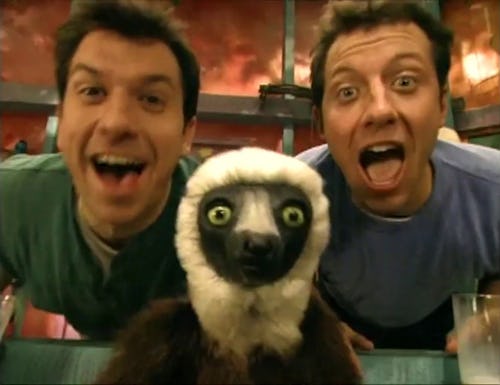
The Origins of Zoboomafoo
When Zoboomafoo premiered on PBS on January 25, 1999, it captured the hearts of families across the United States. The show quickly became a favorite among children and adults alike, thanks to the energetic Kratt brothers and their unique approach to wildlife education. Each 30-minute episode featured a mix of puppetry and live animals, creating an engaging format that was both educational and entertaining. This blend of creativity and real-world interaction made the show stand out in the world of children's programming.
The Kratt brothers, Martin and Chris, have since become household names with their popular series Wild Kratts, which continues to entertain viewers in its seventh season. However, their journey began with a different kind of show—Zoboomafoo. This early venture laid the foundation for their future success and introduced them to a new audience.
From Documentaries to a Children’s Show
After graduating from college, Martin and Chris traveled the world together, creating low-budget documentaries about animals for children. These early efforts formed the basis of their first PBS show, Kratts’ Creatures. Aimed at preschoolers, the series showcased the amazing abilities of various animals in a way that resonated with young audiences.
The success of Kratts’ Creatures led to the creation of Zoboomafoo, a spin-off that took place in a fictional reserve called “Animal Junction.” The show centered around the Kratt brothers and their co-host, a lemur named Zoboomafoo. When Zoboo had a snack, he would burp and transform into a speaking puppet, interacting with the brothers and their animal guests. This innovative concept was ambitious and untested, but it proved to be a hit with viewers.
Challenges and Triumphs
Creating Zoboomafoo was not without its challenges. During the planning phase, some production managers left the project because they doubted its potential. The idea of having a puppet lemur that sometimes transformed into a real one was seen as risky by many in the industry. Despite these concerns, the Kratts pushed forward, bringing their vision to life.
The show featured a wide variety of animals, from the binturong and kinkajous to tarantulas, kookaburras, wolves, and tigers. Even an episode focused on humans highlighted the unique qualities that set them apart in the animal kingdom. The show's success was evident in its high ratings and strong family viewing numbers.
The Real Zoboo
While the Kratts were the face of the show, the true star was undoubtedly Zoboo. Two lemurs played key roles: a real one named Jovian and a hand-made puppet. Jovian, a Coquerel’s sifaka lemur, became a beloved figure on the show. He was known for his playful antics and charming personality, often leaping across the set and interacting with the Kratts.
Jovian's presence added a special touch to the show, making it more than just a wildlife program. His interactions with the brothers and other animals created a sense of wonder and excitement for young viewers. The show also featured Jovian's parents, Nigel and Flavia, in an episode celebrating Zoboo’s birthday.
Behind the Scenes
The production of Zoboomafoo involved a team of dedicated individuals who worked tirelessly to bring the show to life. Gord Robertson, the voice and puppeteer for Zoboo, faced numerous challenges while performing. He often worked on a concrete floor covered in mulch, which was quite different from the typical sets he was used to. The unpredictable nature of the wild animals also posed difficulties, with incidents involving baby skunks, elephants, and even a cougar.
One particularly harrowing incident involved a bear that escaped from the set. The situation could have been disastrous, but the bear was eventually found and the production continued without major disruptions.
Legacy and Future
Despite only running for 65 episodes over two seasons, Zoboomafoo left a lasting impact on the Kratt brothers and the world of children's television. It helped establish them as leading figures in wildlife education and paved the way for their future successes, including Wild Kratts.
A reboot of Zoboomafoo was announced in 2020, but no updates have been released since then. However, fans can still enjoy the original series through streaming services like Amazon Prime or physical media. Introducing this classic show to a new generation is a great way to spark an interest in nature and wildlife.








